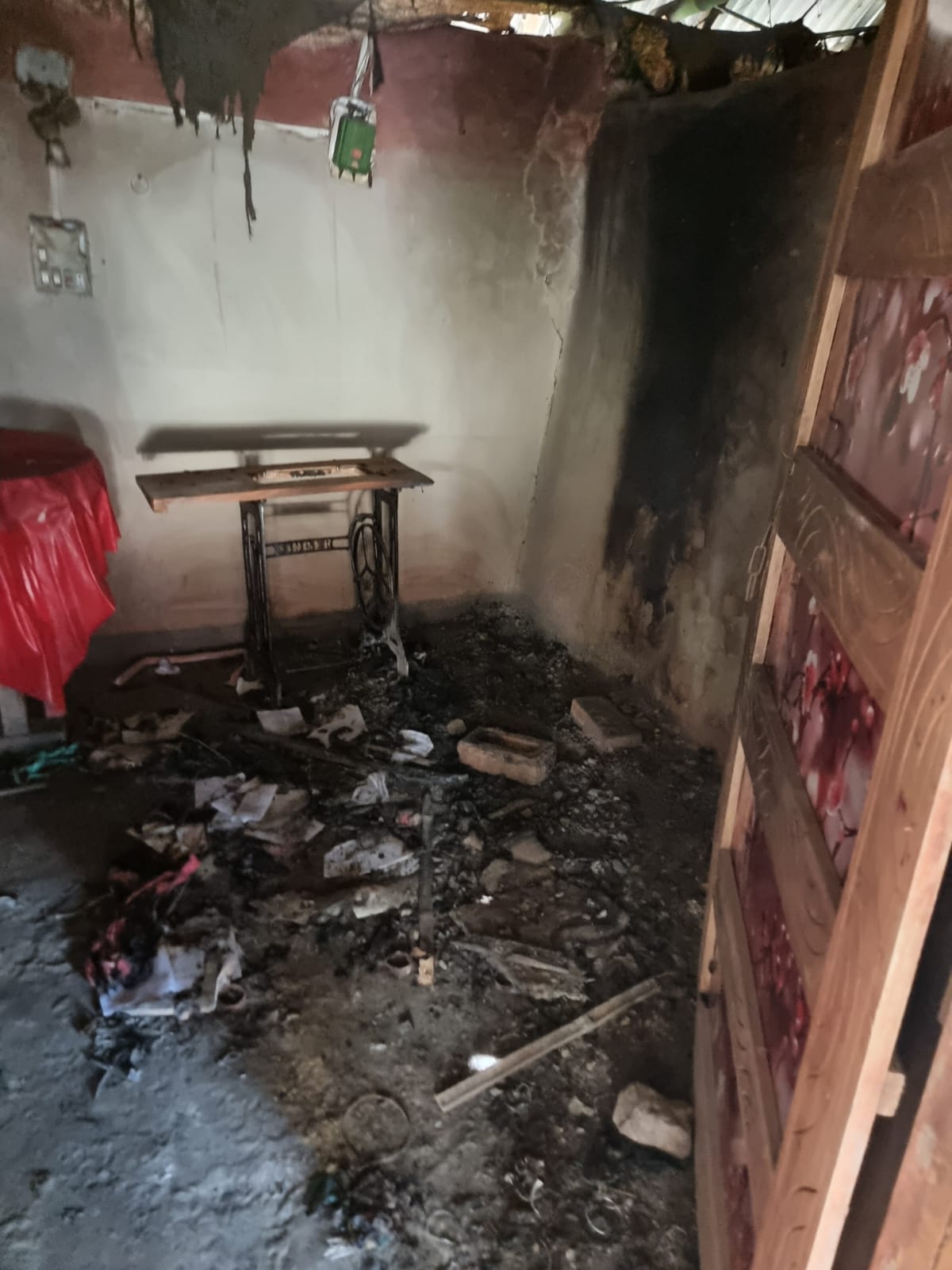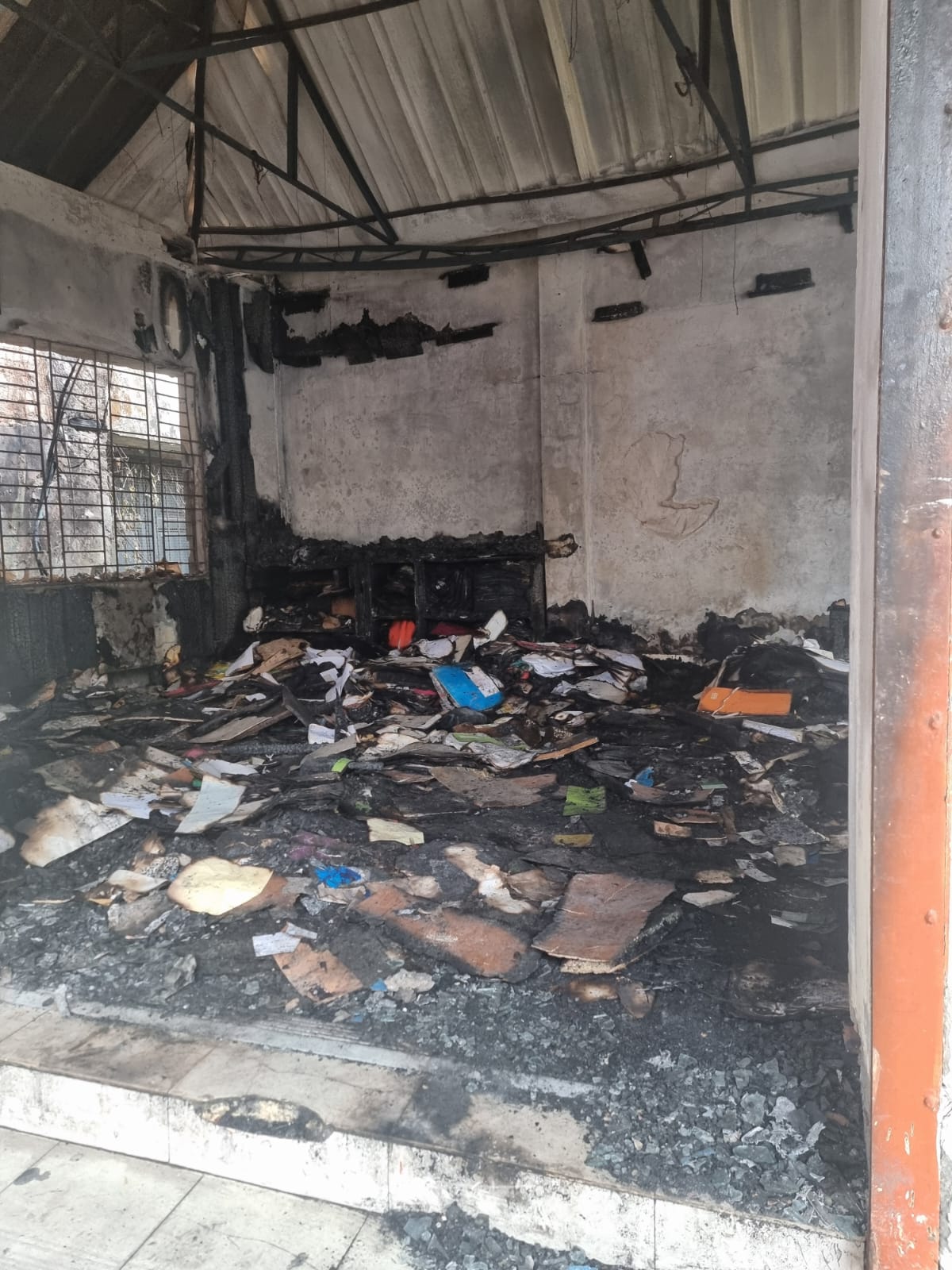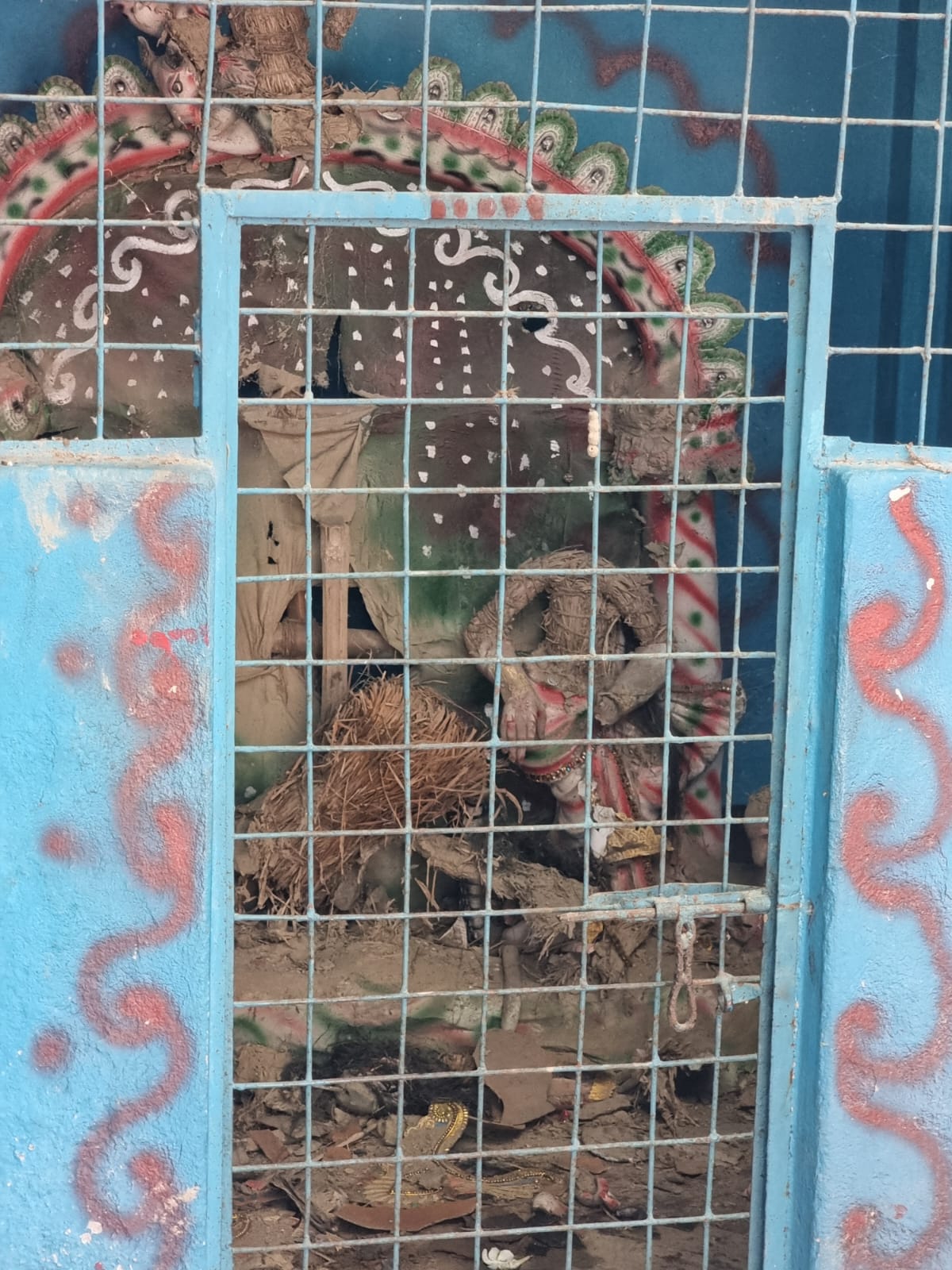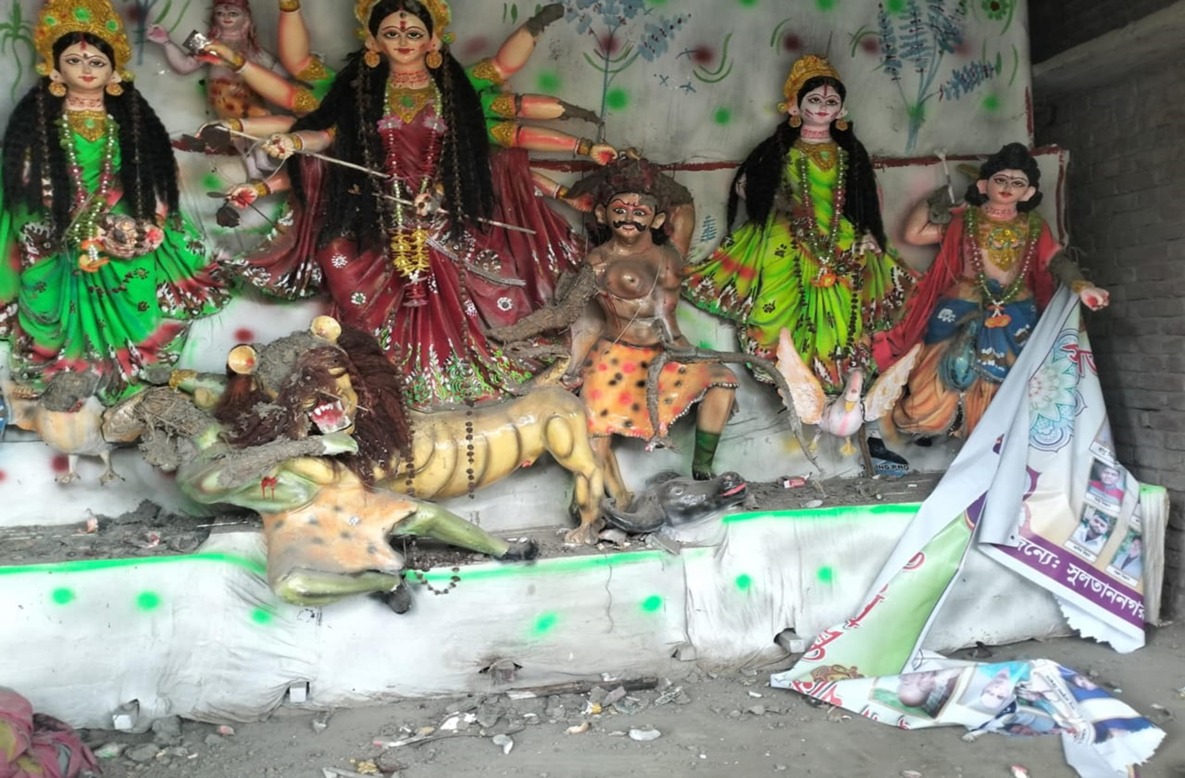Of minoritisation and symbolic violence
Ahmad Ibrahim
On a quiet and narrow alleyway in the Shambhuganj area of Mymensingh city, a goldsmith sat on the floor of his jewellery shop and quietly went about his business. The shop did not boast a wide array of ornaments but still had a sufficient display of gold bangles and chains on its shelves. Despite being close to the main bazaar, the next street over, this alleyway did not have many shops. There were only two. The shop next to the goldsmith’s, a pharmacy, remained shuttered. Its exterior was slightly battered, as if someone had taken to it with a heavy object.
“Why is his shop closed and not this one? They are both Hindu”, a man in a blue shirt, standing at the edge of the jewellery store, quipped at us. “If the target of the attacks were Hindus, then wouldn’t the gold store be attacked first?”
It was at once both a frightening and sobering statement. By then, a smattering of onlookers had arrived at the scene and added to the growing indignation that the man shared. “This man was responsible for sending lists of locals who were BNP members to the police. That’s why he ran away,” pointing to the name of the owner taped on the board of the pharmacy. The onlookers joined in, trying to justify that the violence meted out was simply to sympathisers and patronisers of the previous regime. Their actions justified by the presence of a Hindu goldsmith, who sat quietly in his store, not engaging with the conversation.
Dholgram union, within Jashore district, is home to a large number of Dalit Hindu households. Many of the families live in small, self-contained clusters on opposite ends of the large street that connects to the Bagharpara township, parallel to the Chitra river. One such settlement of 70 households, locally known as the Rishipolli, housed families who have undergone generations of dispossession, a legacy of the willful violence rendered through various iterations of The Vested and Non-Resident Property Act, 1974.

Land which previously held the home of Santal family levelled and turned into farmland by attackers on August 7, in Birganj, Dinajpur.
The small settlement bore signs of indiscriminate attack. Tin walls of houses were broken in two, livestock and poultry stolen, a communal tube well snatched away and a large Durga idol desecrated. Residents recalled a celebratory march that took place on August 5, hours after the fall of the Sheikh Hasina led government. The revellers, it seemed, took a turn into the settlement from the main road and decided to engage in wanton violence. The particular object of their ire was reportedly a local journalist, who lived in the settlement and who had, it is alleged, engaged in gratuitous support for the previous regime. The man in question having already fled, it is not clear what the grievances were against the other locals, including a woman, who sustained injuries from brickbats being hurled at her.
In the Khalishpur area of Khulna city, a man who identified himself as a teacher in the local madrasa gesticulated angrily at us. “If they are saying they have been attacked then they are lying!” It was time for the Asr prayers and a number of Musullis who were making their way into the nearby mosque stopped to listen. The man pointed angrily at the madrasa, “If there were attacks, then how is the temple still standing next to the madrasa? That would have been the first to be attacked.”

The burnt remains of a Santal home and their belongings caused by arsonists on August 7, in Briganj, Dinajpur.
The man had overheard a local Hindu woman recounting an incident from August 5, where individuals had broken into their house, vandalised some of their property and snatched stores of rice. Soon after his remonstration began, the man pointed sheepishly to the broken glass on some windows of houses. “This damage was unfortunate but as you know, there was a celebratory feeling after August 5. Someone may have hurled stones in excitement, but no Hindus were attacked in our area.”
A tea shop right next to the main bazaar in the Ranisankail upazila of Thakurgaon bore signs of attack. A broken wooden bench lay at the back of the store, while a pile of tarp and posters also lay next to it. The shop was operational again by the time we visited Thakurgaon. The owner of the shop, a Dalit Hindu man and his wife, served us tea while recounting events of August 5.
Similar to other places, a “celebratory” mob had made its way through the bazaar, attacking establishments whose owners had a particularly close relationship with the Awami League government. The tea shop and its owner, however, did not have any such affiliation. His crime, it seemed, was the fact that leaders, patronizers and cadres of the Awami League and its virulent student wing used to often congregate there for tea. As if to absolve the violence, a local man pointed to three other stores, owned by Muslims Awami Leaguers that had also been ransacked on the day.
Understanding Trajectories of Violence
In the face of a mass uprising, Sheikh Hasina’ regime of violence, manifest repression and unaccountability finally folded on August 5. The brutal repression of dissent, unchecked corruption and cronyism and extra-judicial killings were the hallmarks of a 15-year rule that hedged its bets on a discourse of development. Equally, however, the regime had propped itself up on the violent secular-Islamist dichotomy, professing itself to be the harbinger of secularist principles and the de facto protectors of minorities in Bangladesh.
Following the collapse of the government, reports began to circulate of attacks on temples, establishments and persons belonging to minority groups (that is, those of non-Bengali and non-Sunni Islam origins). News of these attacks themselves began to be weaponised, by regional and international interests, in a bid to reinforce the illusory narrative set by the Awami League. The counterargument, often extended from both sources within the interim government and law enforcement, served to only add to this dichotomy. In many quarters, the attacks were termed exaggerated and were considered to be part of the mass reprisal against 15 years of repression. Verified news reports now place the number of houses and business establishments attacked at 1058, while 22 places of worship were also attacked (Prothom Alo, 12 September). Following news of these attacks, a fact-finding team from a number of human rights organisations visited some of these areas to assess the damage and establish the facts on the ground. The team visited 26 sites across 7 districts, and found attacks against Hindus, Dalit Hindus, plainland indigenous communities and Ahmadiyya communities had taken place post August 5.

Burnt offices of a Hindu lawyer practicing in the Mymensingh Judge Court, a targeted reprisal attack on August 5.
An extensive overview of the visits is perhaps outside the purview of this article. In each case, the complex trajectory of minoritisation and the material forms of such violence played out in contextually different ways. For plainland indigenous communities, the violence was a continuation of their historical and gradual dispossession of land, a legacy of the failure of Section 97 of the State Acquisition and Tenancy Act, 1950 in protecting against their dispossession. For Ahmadiyyas, the violence is a continuation of the repeatedly targeted attacks against them by violent adherents of Sunni Islam, a legacy of repression that dates back many decades, centering contestations of the true representation of Islam. Both communities suffered from the suspension of law enforcement activities and attackers profited from the resulting security vacuum.

Vandalised remains of an idol within a Hindu home in Ranisankail, Thakurgaon.
However, explanations, by way of excuse, of their involvement with the Awami League were not forthcoming for these communities. It was only in the case of Hindus that such reasonings were extended, at both the local and national levels. In particular, the premise that Hindus were attacked solely for their association with the Awami League government is a dangerously amnesiac understanding of the trajectory of Bangladesh as a nation-state. In practice, if not in principle, Bangladesh has retained its anti-Hindu orientation through the continuation of the Enemy Property (Custody and Registration) Order, 1965 initiated by Pakistan against properties of enemy (Hindu nationals). This order survived Bangladesh’s Liberation War and reinvented itself as the Vested Property (Administration) Act, 1974. The dispossession and displacements caused by this state practice was highlighted in research conducted by Abul Barkat, which showed that between 1974 to 2000, more than half of all land owned by Hindus (1.64 million acres) had been dispossessed using this law (Barkat, 2001). The largest beneficiaries of this land, ironically, were members of the Awami League, the party which had positioned itself as the face of minority protection. The formulation of the Restitution of Vested Property Act, 2001 by the Awami League, was an instance of political tokenism by the then outgoing government. Since then, there has been little development in ensuring that illegally dispossessed lands are returned to Hindu families, despite a High Court verdict declaring all properties vested after 1974 as illegal (Abdul Hye & ors, v State, 2018).
The violence experienced by Hindu families, establishments and houses post August 5 should be read in the context of this decades-long dispossession that has continued unabated throughout Bangladesh’s existence. That is, the ethno-religious project of nation state building in post-independence Bangladesh has retained, for better or for worse, much of the same posture in relation to Hindus as did the two-state theory that gave rise to Pakistan. The insertion of secularism as one of the four principles of the state did not alter the landscape of state-making sufficiently in this regard. In fact, since its inception the Bangladesh Awami League has under Sheikh Mujib, and later under Sheikh Hasina, practiced a patrimonial style of politics which has sought to empower a ruling class of party members across all facets of society and suppress dissent (Dina Siddiqi, 2011). The ideological discourse of this patronage was located at the confluence of Bengali identity above (and beyond) Muslim religious identity, in an effort to distinguish itself from the Pakistan project, aptly described by many as Mujibism.
It is within this illusory discourse of the secular that the material forms of patrimonial politics remain obscured. Following the events of August 5, reprisal attacks took place across the country against all those who had positioned themselves as agents of this patrimonial state. How can we reconcile this narrative of reprisals against the experience of the tea-shop owner in Thakurgaon, the scores of families from the Rishipolli in Jashore, or the woman in the suburbs of Khulna city? To what extent were these largely poor and disenfranchised individuals patrons of the previous regime? In reality, these acts of violence, interspersed within the anarchy of reprisals post August 5, are indicative of the symbolic violence of ethno-religiosity that continues to pervade Bangladeshi nation making agendas, inherited unresolved from the Pakistan project. These acts of violence cannot be understood in isolation to the decades-long disenfranchisement and dispossession of Hindus within Bangladesh.
The previous Awami League regime benefitted from a veneer of legitimacy by situating itself as the benefactor of minorities despite there being little material evidence to that effect. However, it is equally the failure of polity that a distinct and people-centred expression of grassroots politics that rejects the binary of Islam vs secular instituted by the Awami League has failed to take root. As a result, expressions of emancipation continue to hold unresolved ties to ethno-theocratic versions of state making.

The large Durga idol desecrated by attackers on August 5 in Dholgram, Jashore.
When news circulated of attacks on minorities, the public admirably responded by organising community protection for homes and temples, largely in urban spaces. Those who were attacked, however, had to live with the ignominy of being branded beneficiaries of the previous regime, whether justified or not. The collective denial that such attacks extended beyond lines of political patronage pervaded all strata of society, as evidenced in the testimonies we received in Mymensingh, Khulna and elsewhere. This denial exemplifies Bangladesh’s continued struggle with its own national identity(/ies) and its inability to acknowledge the gradual minoritisation of Hindus. True accountability and justice will mean an acknowledgement that the state has enabled, since its inception, the disenfranchisement and dispossession of Hindus and an intentional declaration to finally return illegally vested property against the innumerable applications that are still pending in front of the tribunal. It would mean moving beyond a discourse of paternalism and tokenism. It would mean that the jeweller in Sambhuganj no longer has to quietly watch members of his community ideate about looting and destroying his shop, even if to excuse another act of violence.
Ahmad Ibrahim is Advisor, Social Justice and Inclusion at Bangladesh Legal Aid and Services Trust (BLAST). Views expressed in the article are the writer’s own and not that of any organisation.
Organisations who were part of the fact-finding response included Bangladesh Legal Aid and Services Trust (BLAST), Association for Land Reform and Development (ALRD), Nagorik Uddyog, Nijera Kori, Manabadhikar Sanskriti Foundation (MSF), Minority Rights Forum, Uttarbanga Adivasi Forum
References:
Abul Barkat, 2001. An Inquiry Into Causes and Consequences of Deprivation of Hindu Minorities in Bangladesh Through the Vested Property Act: Framework for a Realistic Solution.
Dina Siddiqi, 2011. Political culture in contemporary Bangladesh: histories, ruptures and contradictions.
State v Abdul Hye & others. 10 SCOB [2018] HCD.
Back to Homepage